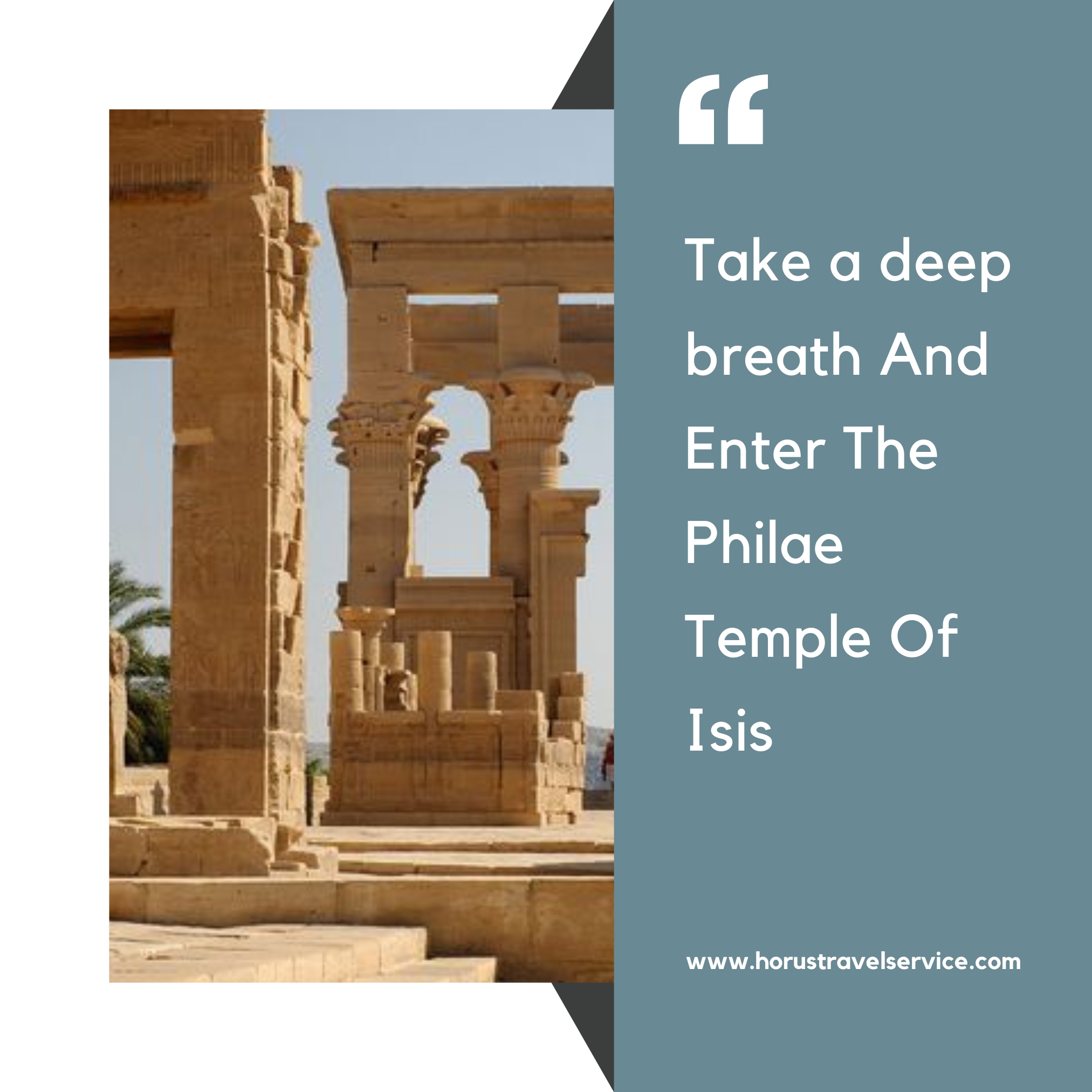


2024-06-18 17:32:49
Philae | Ancient Egyptian Temple of Isis , Aswan
Imagine getting off a small boat and onto the island's coastline, then the great pylon of the Temple of Isis stands out against the beautiful sky. Hieroglyphs and reliefs carved deep into the stone represent the goddess isis in all her majesty, nursing the pharaohs and protecting the people. The sun's rays created intricate shadows that brought the sculptures to life, as if the gods themselves were whispering their secrets to those who would listen.
The legend began a long time ago when Philae Island was sacred land, sacred as the burial place of the god Osiris, the husband of the goddess Isis, and the father of the god Horus. Pilgrims from far and wide would journey across the vast desert and sail down the mighty Nile, drawn by the allure of the temple of Isis, a place where miracles were believed to happen.
As you enter the temple, you will find yourself among a maze of halls, divine and sacred, and you will be stunned by a beam of serenity and love emanating from the statue of the goddess Isis decked with gold and jewelry, and you will find every room decorated with charming art that tells the stories of God, kings, battles, and celebrations.
The smell of incense still lingers to echo a whiff of prayers through stone walls in the deepest sanctuary, where only the top priest will enter.
The Kiosk of Trajan
A little off-centre in the temple stands the Kiosk of Trajan, known as "Pharaoh's Bed." Fourteen slender columns rise to the sky; each is topped by a capital adorned with lotus and papyrus motifs. This elegant pavilion, open at the sides, offers a view over the Nile, a river whose soft flow seems as though it might wash in whispers from afar. It was here that Roman emperors, in their quest for divinity, sought an association with the ancient gods of Egypt.
But the story of Philae does not end with the fall of the ancient gods. Christianity rose on the island through the centuries. These very temples were reused, and new symbols were etched into the old stones. Crosses and other Christian motifs mixed with hieroglyphs, presenting a sophisticated tapestry of faith and history.
A new challenge arose in the 1960s when the construction of the Aswan High Dam was about to submerge Philae Island forever. This gigantic task took an international team of archaeologists and engineers working against time, relocating the whole temple complex. The temples were dismantled stone by stone, then relocated on higher-level ground of Agilkia Island. It is this type of modern preservation miracle that will ensure the legacy of Philae to future generations.
Today, at sunset over the Nile, the Philae Temple glows in the golden light, and people across the world throng to witness the sound and light show that in the starlight lights up with living history. Through scintillating lights and an interesting narrative, the story of Isis, Osiris, and Horus is retold, carrying one back in time to when really gods walked amongst mortals.
As the night deepens, the stillness is again returned to the island. The ever-flowing Nile River mirrors the majestic silhouette of the temple, standing timeless to guard all the legends of yesteryears of Egypt. It is what has made Philae Temple a place of wonder and reverence, in which echoes of ancient prayers and dreams of the past inspire awe and devotion.
And so, the legend of Philae lives on, a testament to the enduring power of faith, the resilience of history, and the eternal beauty of the gods' earthly abode.
And if Egypt is ringing in your mind now, you can explore the breathtaking beauty of timeless beauty, ancient mysteries under the safekeeping leadership of Horus Travel Service.
Book your ideal tour now!

Newsletter
Sign up to receive the best offers








